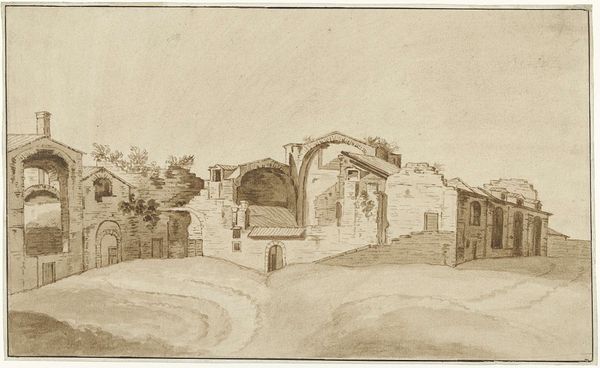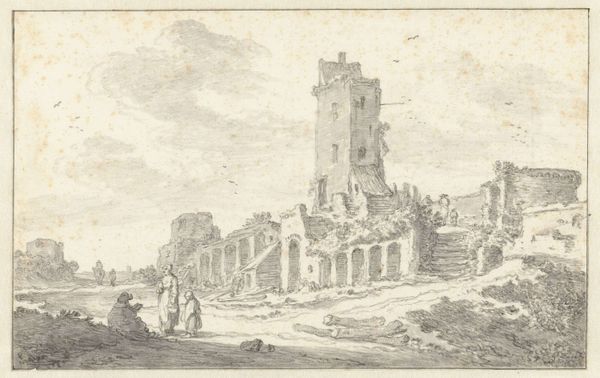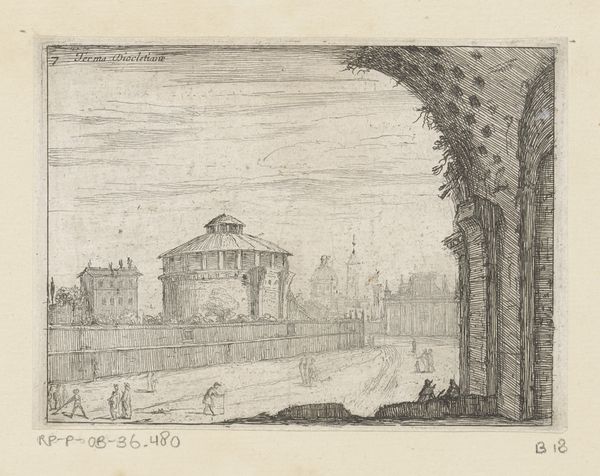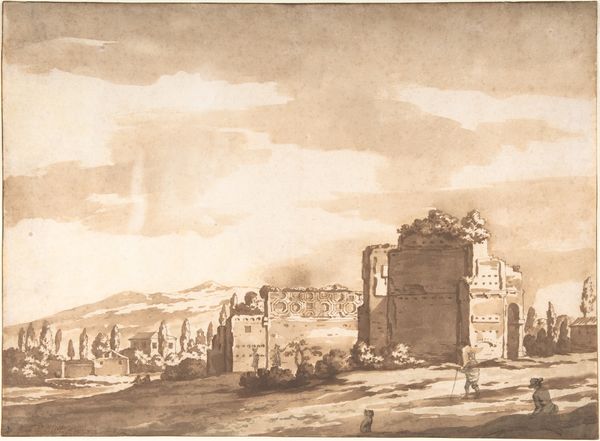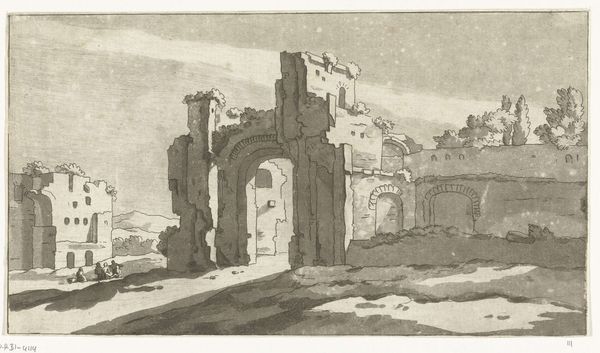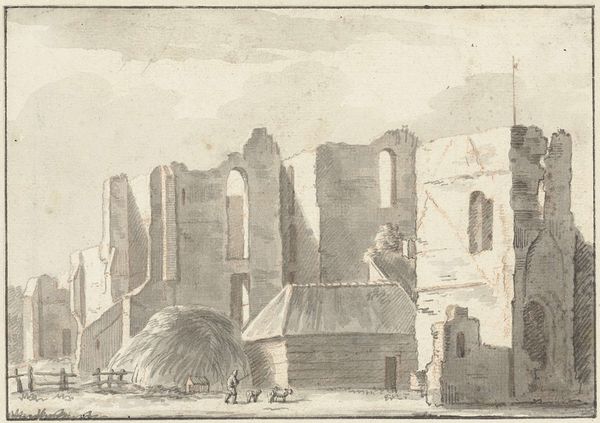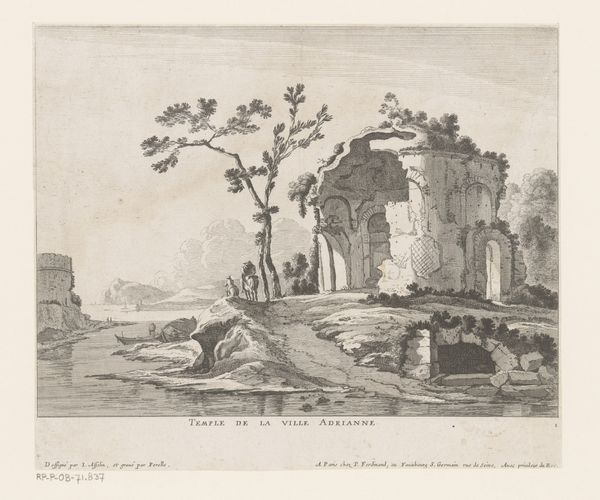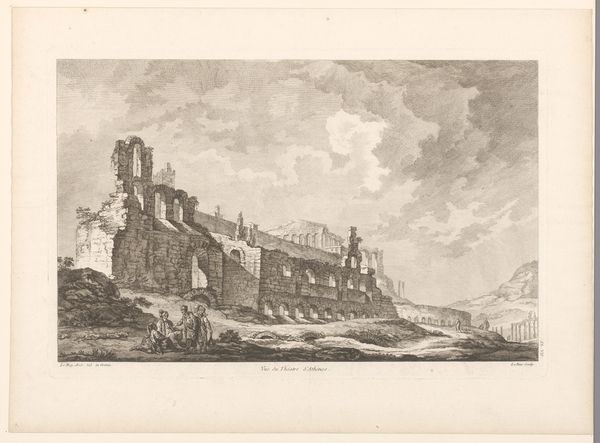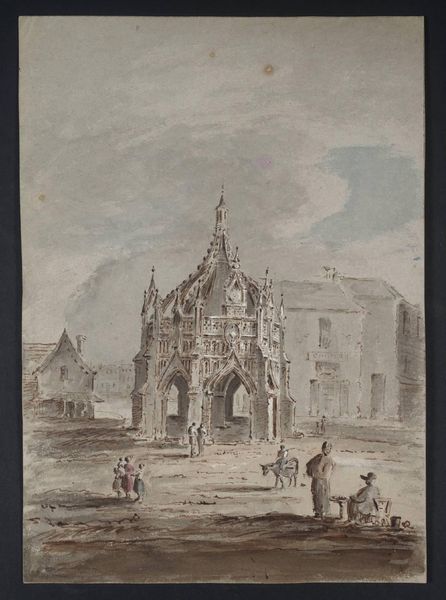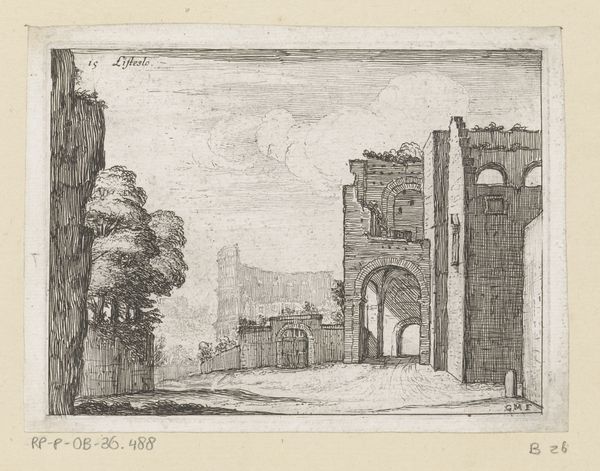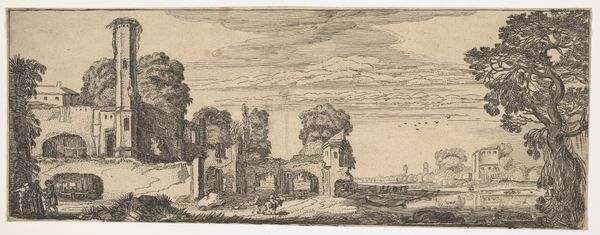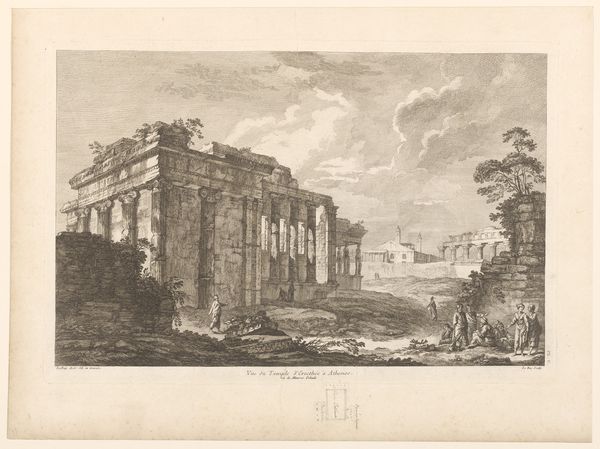
drawing, pencil, architecture
#
architectural sketch
#
drawing
#
neoclacissism
#
pencil sketch
#
landscape
#
pencil
#
cityscape
#
architecture
Dimensions: height 195 mm, width 387 mm
Copyright: Rijks Museum: Open Domain
Editor: Here we have Jean Grandjean’s pencil drawing, "View of the Ruins of the Palace on the Palatine Hill in Rome," dating from the late 18th century. The light and shadows create a dramatic sense of history. What can you tell me about the work? Curator: I'm struck by the physical act of Grandjean, likely a Grand Tourist himself, meticulously rendering these ruins. Consider the labor involved, the repetitive strokes of the pencil bringing forth not just the aesthetic decay of the palace but also commenting on the impermanence of empire. What does it mean to invest so much labor in depicting ruins? Editor: So it’s not just about capturing a picturesque scene but about the commentary implicit in choosing ruins as a subject? Curator: Precisely. Neoclassicism is often seen as a celebration of order and reason. However, here we have a deliberate focus on what remains, what has been consumed by time. The artist is making a statement by directing us toward decline and material transformation. How does that connect to the rise of industrial production and its implications? Editor: It's interesting to think about this being made on paper, with a pencil – relatively new materials at the time - to capture very ancient ruins, implying a tension between old and new. Perhaps the pencil medium flattens all this grandeur to the everyday. Curator: An excellent observation. It levels hierarchies, prompting a re-evaluation of artistic labor. And the proliferation of images through printmaking? This drawing could be preparatory, hinting at broader networks of consumption and cultural exchange that reshape understandings of classical heritage. Editor: It completely reframes my understanding of neoclassical landscapes. The pencil drawing isn’t just a pretty scene, it is enmeshed in broader systems of labour and commodification! Curator: Indeed. It reveals the material conditions that shaped its creation, challenging us to look beyond the surface and delve into deeper contexts.
Comments
No comments
Be the first to comment and join the conversation on the ultimate creative platform.
